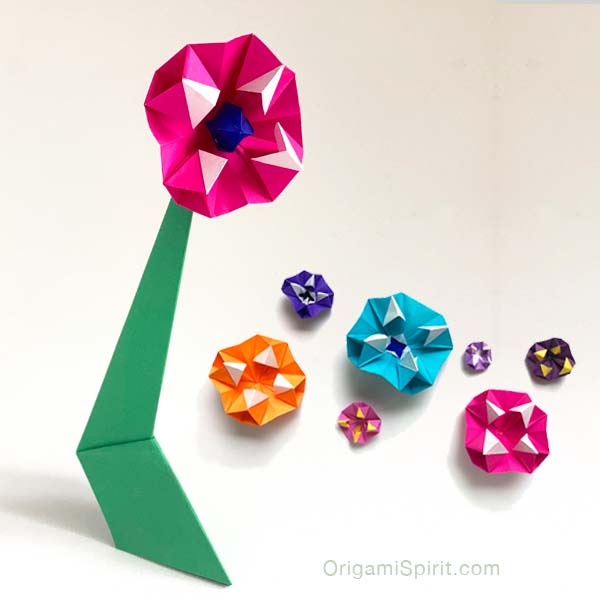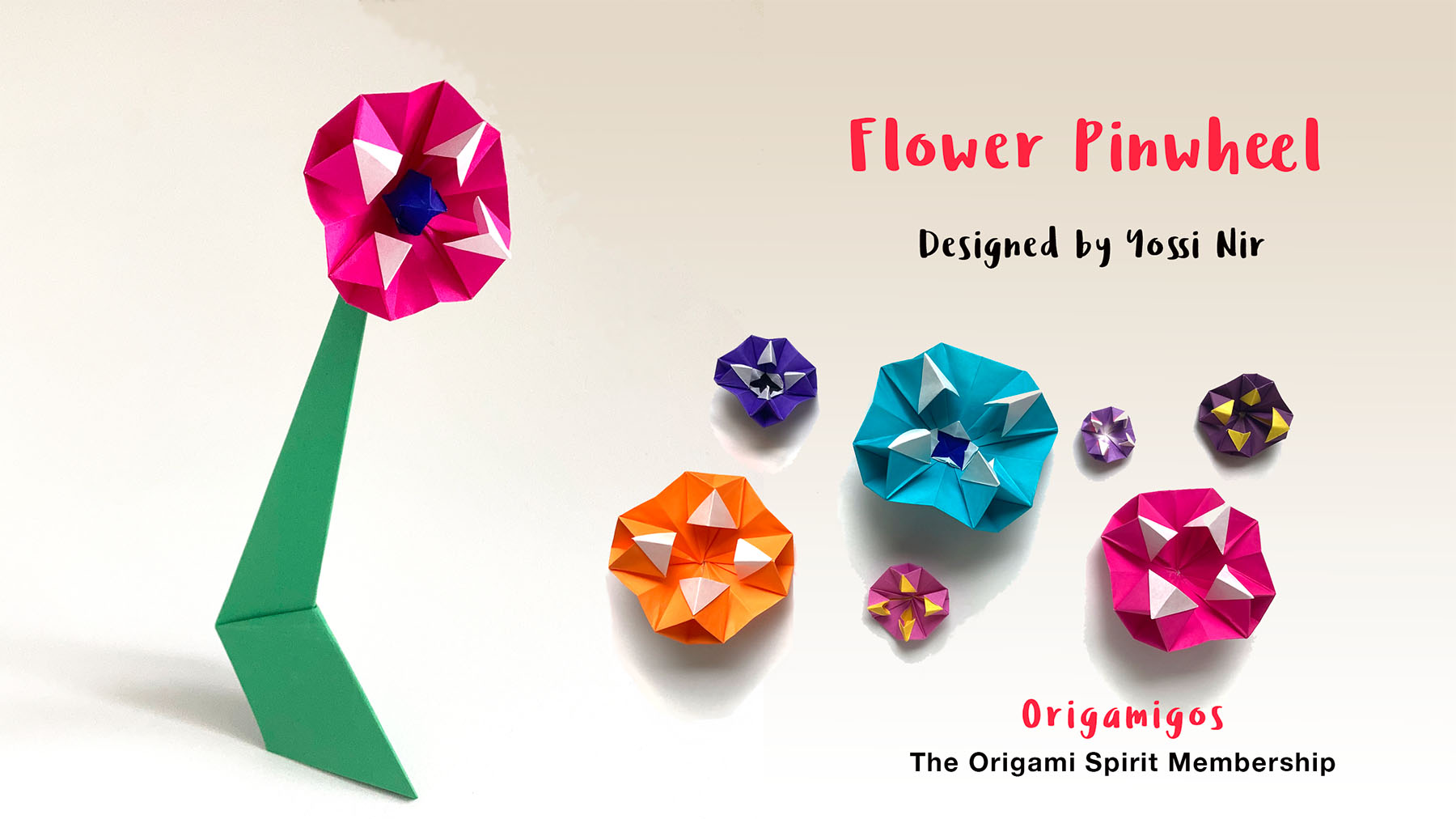
In the video presented here, we will be folding a graceful Flower Pinwheel, designed by Yossi Nir. In this model, flowing forms radiate outward in perfect harmony, creating a bloom that captures the essence of a flower.
This charming creation comes to life using one square piece of paper, then finds its place atop an elegant zigzag stem crafted from a single rectangular sheet. The combination creates a lovely display that captures both geometric origami precision and the natural beauty of a flower reaching toward the light.
Although two pieces of paper are used to make this flower, each piece is different in size and folding method. It is considered a multi-piece origami.
Materials for the Flower Pinwheel
- For the flower: ONE 6 x 6-inch (15 x 15 cm) square with different colors on each side
- For the stem: ONE piece of A4 paper in GREEN (or any color you prefer for the stem). If using US letter-size paper, trim 5/8 inch from the long side to achieve A4 proportions.
- A toothpick or pointed tool.

If you are at the Apprentice Bee Stage (Stage 1) Make sure you’re familiar with the Blintz Base, which is demonstrated in Origami Basics Mini-Course (videos #3). Before attempting the flower and stem, watch the video tutorial at least once to visualize the folding sequence and build confidence. To reinforce your understanding, practice with the traditional Fortune Teller first. This playful model uses the same foundational technique in a simpler application, making it ideal for building muscle memory before tackling the Flower Pinwheel.

If you are at the Emergent Frog Stage (Stage 2) While Stage 1 recommendations still apply, you’re ready for additional challenges. Deepen your Blintz Base mastery by folding the traditional Sanbo Box, a model requiring greater precision. Practice the entire folding sequence using plain, unpatterned copy paper, as this will help you focus on the mechanics without visual distractions. Use plain copy paper no smaller than 6 x 6 inches (15 x 15 cm) for your first flower attempts. Remember that patience and persistence are your greatest allies!

If you are at the Competent Goldfish Stage (Stage 3) Keep in mind the suggestions from previous stages as you continue developing your skills. Experiment with different paper types and explore whatever materials you have available. Don’t overlook the creative possibilities of coloring your own papers to achieve unique effects and personalized designs. For detailed guidance on this technique, check out the: Coloring Paper tutorial -Origami Spirit and Coloring Paper Tutorial Happy Folding.

If you are at the Ambassador Cat Stage (Stage 4) Keep in mind the suggestions from previous stages. At this level, focus on how you present and photograph your finished models to showcase your growing skills. For the best origami photography results, use an uncluttered, plain background in neutral colors, and avoid reflective surfaces that can create distracting glare. Natural indirect daylight produces the most beautiful results—overcast days are ideal. Simply place your model near a window for soft, even lighting.

If you are at Pioneer Owl Stage (Stage 5) If you’re interested in designing your origami figures, consider exploring creative modifications to both the flower and the stem. Can the flower be paired with a different base? Could a stem be constructed from square paper instead? How might this model serve a different purpose when combined with other designs?
Remember that asking “What if…” questions can spark innovative modifications that form the foundation of original model design. The process of systematic experimentation will develop your design intuition and expand your creative toolkit. For structured guidance on this approach, refer to The Joy of Origami design course Module, 4 Section 4, Point of Departure #3: Blending Elements, which explores techniques for combining features from different origami models to create entirely new designs.
Watch the Videos
VIDEO – Flower Pinwheel

Share your folds in our FACEBOOK group. Remember that the purpose of sharing them is not only to show beautiful folds. You can also share your challenging attempts and ask questions. We are there to help each other!
